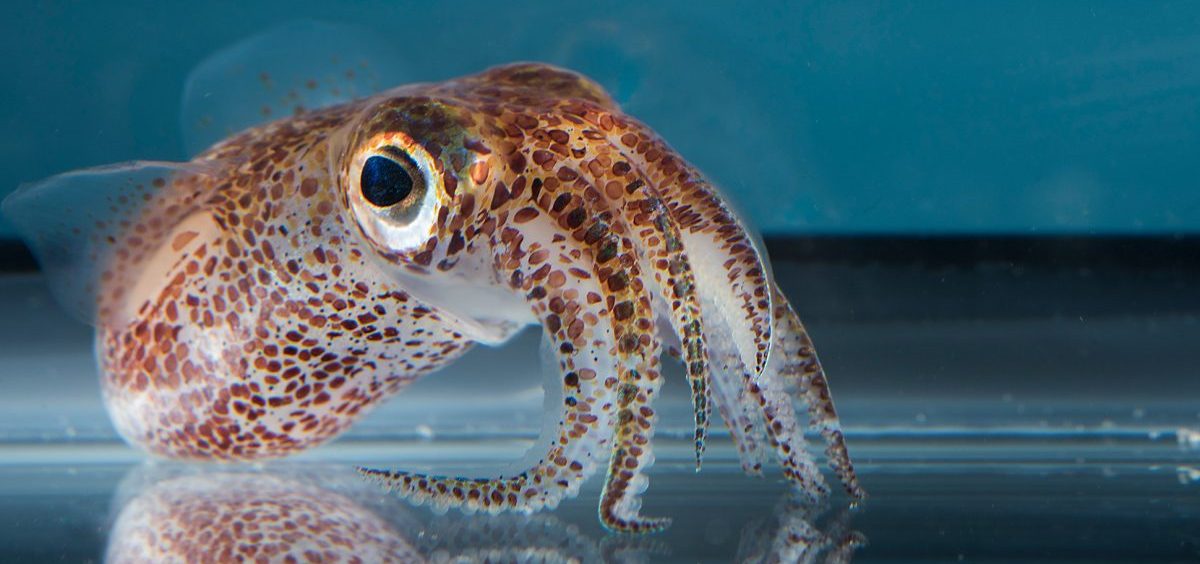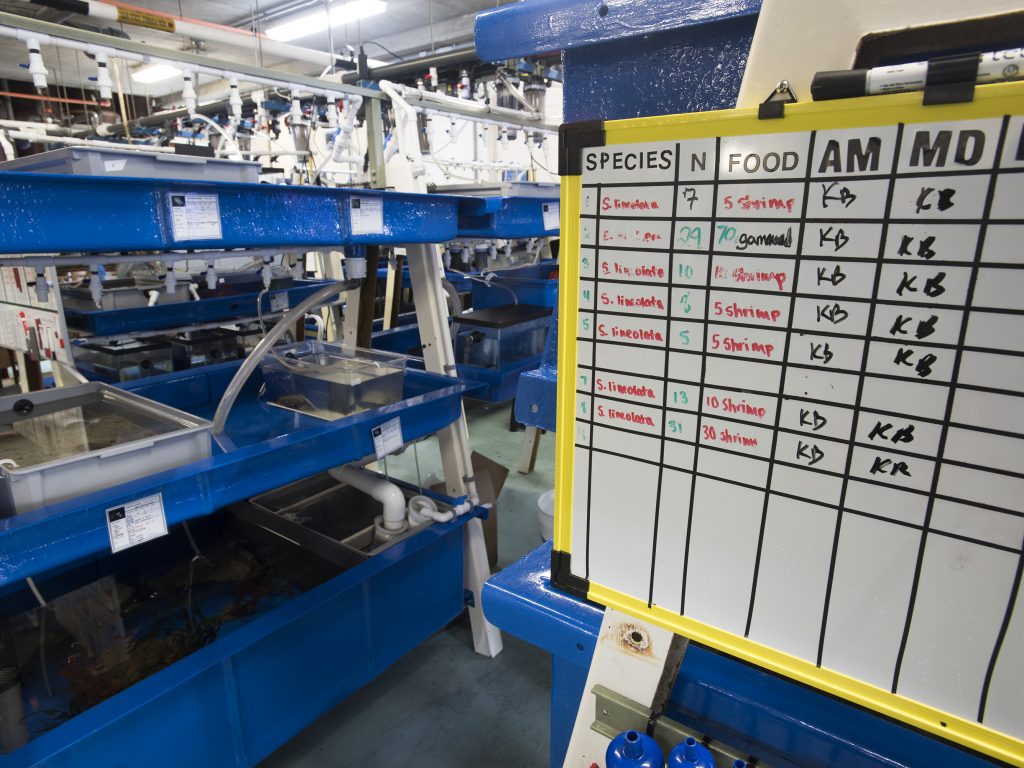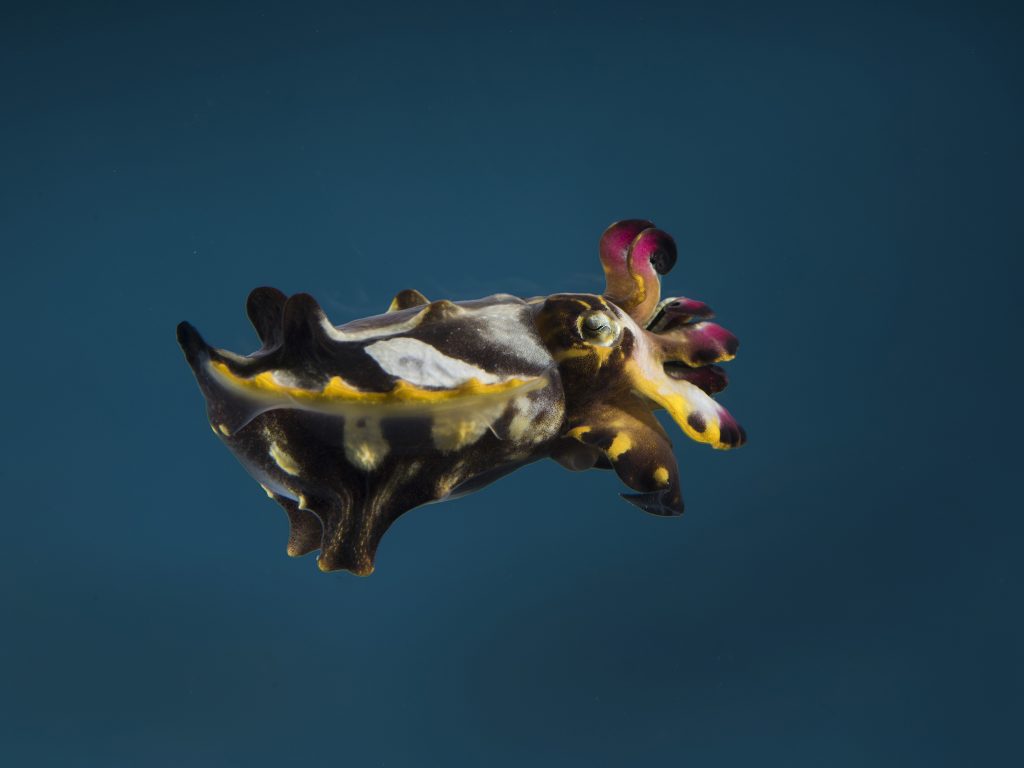News

Why Octopuses Might Be The Next Lab Rats
By: Nell Greenfieldboyce | NPR
Posted on:
At the Marine Biological Laboratory in Woods Hole, Mass., there’s a room filled with burbling aquariums. A lot of them have lids weighed down with big rocks.
“Octopuses are notorious for being able to, kind of, escape out of their enclosures,” says Bret Grasse, whose official title at MBL is “manager of cephalopod operations” — cephalopods being squid, cuttlefish and octopuses.
He’s part of a team that’s trying to figure out the best ways to raise these sea creatures in captivity, so that scientists can investigate their genes and learn the secrets of their strange, almost alien ways.
For decades, much of the basic research in biology has focused on just a few, well-studied model organisms like mice, fruit flies, worms and zebrafish.
That’s because these critters are easy to keep in the laboratory, and scientists have worked out how to routinely alter their genes, leading to all kinds of insights into behavior, diseases and possible treatments.
“With these organisms, you could understand what genes did by manipulating them,” says Josh Rosenthal, another biologist at MBL. “And that really became an indispensable part of biology.”
But it’s also meant that basic biology has ignored much of the animal kingdom, especially its more exotic denizens.
“We’re really missing out on, I would say, the diversity of biology’s solutions to problems,” Rosenthal notes.
That’s why he’s part of the effort to make squid and octopuses feasible to study in the lab, so researchers can start to explore their sophisticated brains and unusual behaviors.
But it’s a challenging endeavor. Almost all octopuses aren’t social — they will attack each other — and have to be kept in separate enclosures. What’s more, cephalopods are very sensitive to the chemistry of the water that surrounds them. They also grow extremely quickly, and that means they need lots of live food to fuel that growth.
The MBL researchers have focused on species from around the world that are small, relatively hardy and quick to reproduce. The pygmy zebra octopus, for example, grows only to the size of a grape and lays numerous clutches of eggs through its life.
“It’s the only place on the planet that you can go where we are culturing a number of these species through every life stage, through successive generations, with the goal of creating a genetically tractable system,” Grasse says. “We’re going to continue to scale this program as more and more scientific communities become involved. We’ve already seen a great response in the two years that we’ve been here.”
“We do a census every week,” he adds, “and right now we have roughly around 3,000 cephalopods under our care.”

“She’s right down in there — you can kind of see her eyeball checking us out,” Grasse says, explaining that the octopus is sitting on her eggs in this dark enclosure. She squirts some water up at him.
This species was the first octopus to have its full genetic sequence published, a scientific feat for researchers in 2015 that helped launch this effort to turn cephalopods into a new research tool.
“I ended up sequencing the octopus genome because I’m interested in how you make a weird animal,” says Carrie Albertin, who now works at MBL. “Most of their genes have some similarity to genes that we have and other animals have. Their close relatives are clams and snails. But they seem just so otherworldly.”
She notes that they are separated from us by hundreds of millions of years of evolution.
“Cephalopods are this fantastic example of a completely independent evolution of large brains,” Albertin says. “They have these beautiful, fantastic, elaborate brains.”
What’s more, these animals can also change their skin color, regrow arms and move through the water using jet propulsion.
The genetic sequences of more cephalopods are being deciphered, with the most recent being that of the Hawaiian bobtail squid. “People are working on the genomes for a bunch of different cephalopods,” Albertin says. “I think there’s going to be a couple more coming out soon.”
Knowing all the genes is just a start for researchers interested in these animals. The obvious next step is trying to tinker with those genes, to see what happens if they’re disrupted.
Rosenthal’s lab has been working hard to genetically alter a cephalopod, and he says that they’ve “arguably” done it in the past year, though he notes that “no one has published this yet and this is really work in progress.”
He shows off photos of a normal Hawaiian bobtail squid and then a ghostly albino one that his lab created by disrupting a pigmentation gene.
Figuring out how to do this has been labor-intensive. Research assistant Namrata Ahuja sits at a microscope, where she injects gene-editing material into tiny squid embryos over and over and over again.
“You get embryos almost every day, and their clutch that they lay can vary anywhere from 50 to 200 eggs in one clutch,” she explains. “So if you get that many in one day, for five days a week, that adds up.”
The scientists have had to figure out the best needles to use for these injections, and how to best support the growth of newly hatched squid. It’s all uncharted territory.
The ethical questions are new too. “I think we’re very, very concerned about the ethics surrounding these creatures, particularly from the standpoint that it isn’t being regulated on a federal level,” Rosenthal says.

“We’ve sort of pioneered efforts to figure out what anesthesias are useful for cephalopods,” says Rosenthal, and they work to make sure living conditions are stress-free.
“We’ve tried to be quite preemptive on this, in putting together what I think, in the U.S., is a one-of-a-kind policy for cephalopod research here,” he says.
Because, even though octopuses and squid are invertebrates, they aren’t as primitive as fruit flies and worms — and that is precisely why scientists want to study them.
9(MDI4ODU1ODA1MDE0ODA3MTMyMDY2MTJiNQ000))

